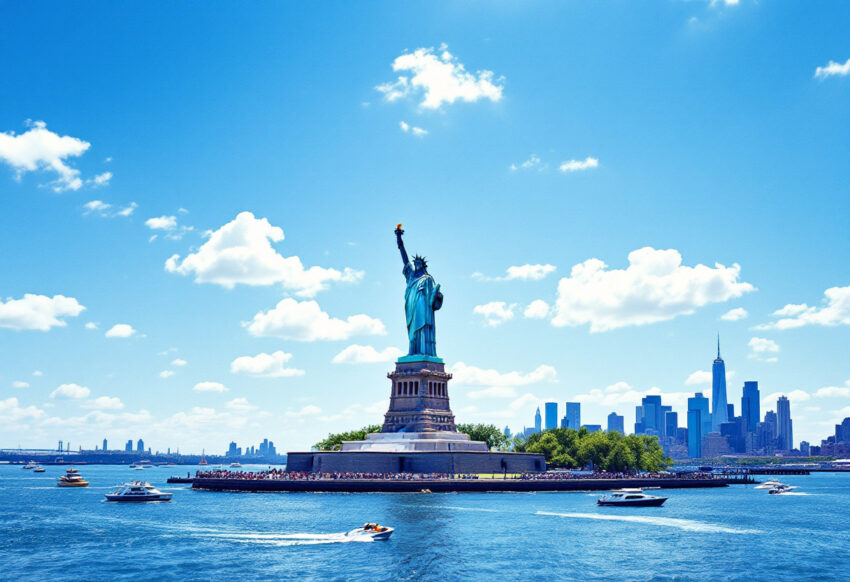New U.S. Visa Bond Requirement for Tourists and Business Travelers from High Overstay Countries – A Fifteen Thousand Dollars Bond in the 2025 Pilot Program: What You Need to Know


In a significant shift in U.S. immigration policy, the State Department has announced a new initiative requiring tourists and business travelers from certain countries to post a Visa bond of up to $15,000. This new program, slated to begin in August 2025, has raised concerns within the global tourism community, as it targets countries with high overstay rates on U.S. visas. Countries including those from Africa and other regions with elevated visa overstays will be most affected by this change, as the U.S. seeks to better manage its immigration policies.
This development, which extends the Trump-era initiative, introduces a pilot program that aims to test the feasibility of implementing visa bonds as a tool to ensure foreign visitors comply with the terms of their visas. The bond requirement is expected to be temporary, operating for 12 months, and will only affect certain nationalities as outlined by the U.S. State Department. While the move is designed to curb visa overstays and strengthen border security, it is also likely to cause disruption to the tourism and business sectors. As tourists and business professionals plan their visits, many will need to weigh the added cost and complexity of securing a bond against the benefits of traveling to the U.S.
New Visa Bond Requirement: A Game-Changer for Tourism and Business Travel
The U.S. State Department’s new bond program is likely to be a game-changer for international tourism and business travel. Under the proposed plan, tourists and business travelers will be required to post a bond as high as $15,000 if they are from countries with significant overstay rates. These bonds are intended to guarantee that visitors comply with the terms of their visas and leave the U.S. promptly at the end of their stay.
The pilot program, which is scheduled to run for 12 months, is part of a broader strategy to reduce overstays, a persistent issue in U.S. immigration. The countries targeted by the bond requirement will be those where overstay rates for visas are above 10%. Countries in Africa, as well as other regions, will be the focus of this measure, continuing a similar initiative that was first introduced under the Trump administration.
The State Department plans to announce the list of countries affected by the new rule at least 15 days before the program takes effect. Travelers from these countries will need to post a bond before entering the U.S. The bond will be refunded once they depart the U.S. in accordance with the terms of their visa, or in the event of their naturalization or death.
The Impact on Key Global Destinations: What Tourists Need to Know
Tourists from specific countries will be directly impacted by this new bond requirement. For travelers planning to visit the U.S., the new rule could significantly alter their travel planning and costs. Let’s explore the implications for some major tourist destinations:
- Africa: Many African countries, particularly those with higher overstay rates, will be affected. This includes countries that have experienced challenges with visa compliance in the past. For African tourists, this could mean additional financial burden, potentially discouraging travel to the U.S. for leisure and business.
- South Asia: Countries like India, Pakistan, and Bangladesh, with high numbers of visa overstays, could see their citizens being impacted by this new requirement. As the U.S. is a top destination for business travelers and students from this region, the new visa bond may have a major impact on the flow of travelers.
- Middle East: Visitors from Middle Eastern countries, especially those with strong business and tourism connections to the U.S., may also face hurdles. The additional costs associated with posting a bond may lead some to reconsider their travel plans.
- Latin America: Latin American countries that also have a higher incidence of visa overstays may face similar challenges. This could particularly affect tourists seeking to visit popular U.S. destinations such as Miami, New York, or Los Angeles.
- Europe: While European countries typically have lower overstay rates, any changes to the visa process may still have indirect effects, as tourists from this region could find it more difficult to navigate the new requirements, especially those visiting for business or educational purposes.
- East Asia: Countries like China, Japan, and South Korea, with a high volume of business travelers and tourists, may see some of their citizens impacted by this bond program.
How the Visa Bond Pilot Program Will Work
The new visa bond system is designed to help U.S. immigration authorities better manage and enforce visa compliance. Here’s how the process will work:
- Eligibility and Requirements: Travelers from countries with significant overstay rates will be required to post a bond of up to $15,000. The bond will be a refundable security deposit that ensures compliance with visa terms.
- Refund Process: Once the traveler departs the U.S., the bond will be refunded in full, provided they have complied with the terms of their visa. However, if a traveler overstays or fails to meet the terms of their visa, the bond could be forfeited.
- Program Duration: The bond requirement will be in place for a 12-month pilot program, which will help U.S. authorities assess the effectiveness of such a policy. After this period, a decision will be made about whether to extend or expand the program.
- Notification and Transparency: The U.S. State Department will publish a list of affected countries and notify travelers at least 15 days in advance before the program begins. The list may change, with new countries potentially added to the program, depending on their overstay rates.
Business and Tourism Industry Reactions to Visa Bond Proposal
The implementation of such a bond requirement is expected to have significant effects on the global tourism and business sectors. The U.S. is one of the most visited countries in the world, attracting millions of tourists and business professionals every year. Many stakeholders in the tourism industry have expressed concerns over the potential impact of the bond system.
Tour operators, travel agencies, and hospitality businesses could see a decline in international visitors if the added cost of the bond deters people from traveling. Business travelers, who often require frequent access to the U.S. for conferences, meetings, and other professional engagements, may find the bond requirement cumbersome and costly. Additionally, students seeking to study in the U.S. could face additional financial barriers, as many already struggle with the high cost of education.
On the other hand, the U.S. government argues that the program will help prevent overstays, which have been a long-standing issue. The bonds provide a form of financial security to ensure that visitors comply with their visa requirements and do not remain in the country beyond their authorized stay.
What Travelers Can Expect in the Coming Months
As the new visa bond requirement prepares to roll out, travelers and the tourism industry should brace for potential disruptions. The announcement of affected countries will be made soon, giving visitors time to prepare for the changes. Those planning trips to the U.S. should monitor the State Department’s website for updates and be prepared for additional financial requirements.
For many tourists, the bond requirement could be a barrier to visiting the U.S., potentially leading them to choose alternative destinations. The financial burden may also shift travel plans for business professionals, students, and leisure travelers who view the U.S. as a top destination.
Conclusion: A Shifting Landscape for U.S. Travel
The new visa bond requirement is a significant change in U.S. immigration policy, impacting global tourism and business travel. While the program aims to reduce visa overstays and ensure compliance with visa terms, it could create new challenges for travelers, particularly from countries with high overstay rates. As the pilot program unfolds, its long-term implications for the U.S. travel industry and international tourism will become clearer.
For now, travelers to the U.S. will need to stay informed about the new bond requirements, prepare for possible financial implications, and adjust their travel plans accordingly.
The post New U.S. Visa Bond Requirement for Tourists and Business Travelers from High Overstay Countries – A Fifteen Thousand Dollars Bond in the 2025 Pilot Program: What You Need to Know appeared first on Travel And Tour World.






